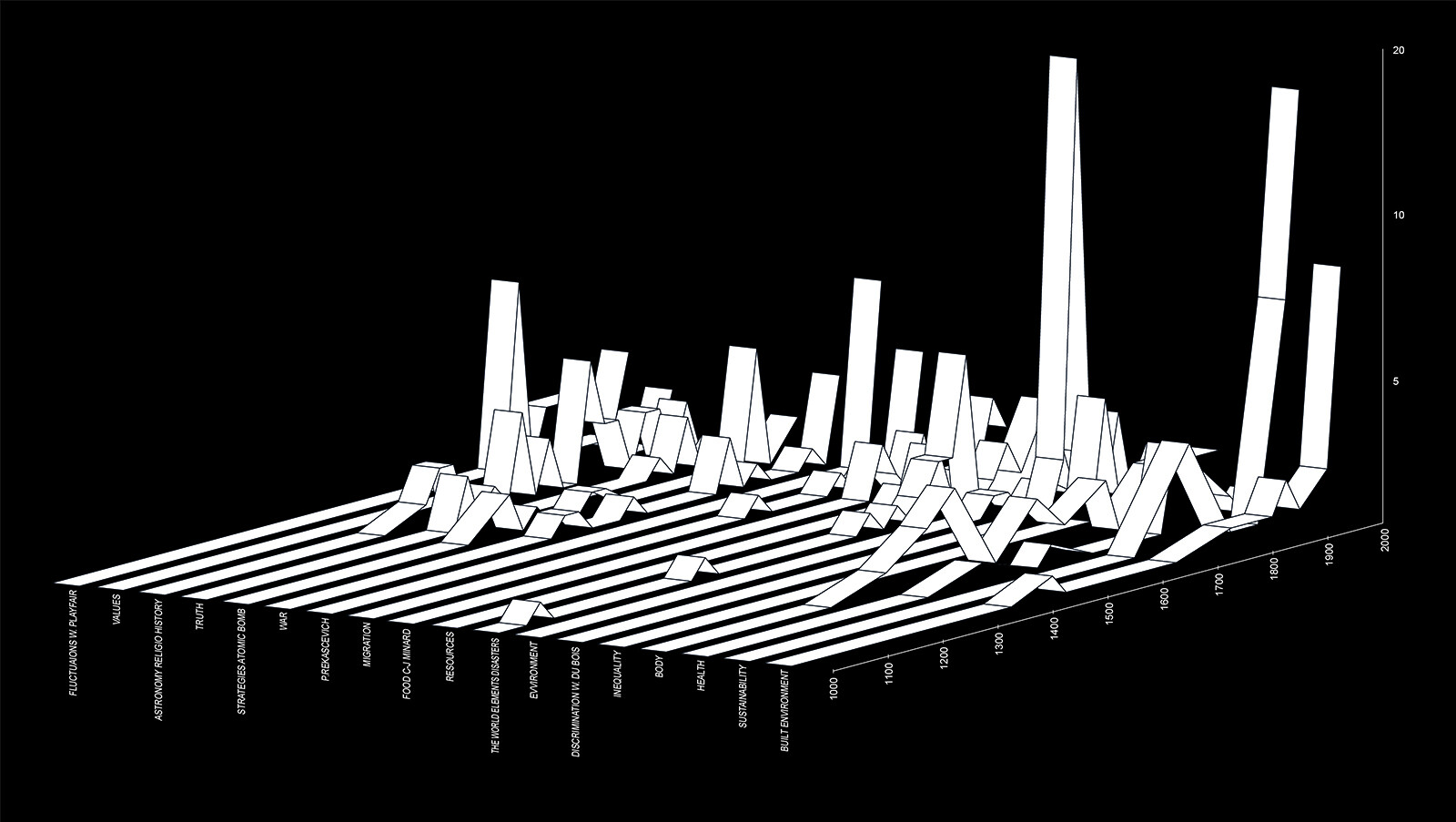A project by AMO/OMA
May 10–November 24, 2025
Ca’ Corner della Regina
Venice
Italy
Fondazione Prada will present Diagrams, an exhibition project conceived by AMO/OMA, the studio founded by Rem Koolhaas, in its Venetian venue, Ca’ Corner della Regina, from May 10 to November 24, 2025 (press previews on May 7 and 9).
Diagrams investigates the visual communication of data as a powerful tool for constructing meaning, comprehension or manipulation and a pervasive instrument for analyzing, understanding and transforming the surrounding world. It seeks to foster dialogue and speculative reflection on the relationship between human intelligence, scientific and cultural phenomena, and the creation and dissemination of knowledge.
The exhibition, on view on the ground and first floors of the 18th-century Palazzo Ca’ Corner della Regina, gathers more than 300 items, including rare documents, printed publications, digital images, and videos, spanning from the 12th century to the present day and related to various geographical and cultural contexts. This material is displayed according to a thematic principle that reflects not only contemporary world urgencies but also, de facto, demonstrates the diagram’s transversal and diachronic nature.
The project benefits from the extensive research conducted by Fondazione Prada in close collaboration with Rem Koolhaas and Giulio Margheri, Associate Architect at OMA. The expertise of Sietske Fransen, Max Planck Research Group Leader, Bibliotheca Hertziana – Max Planck Institute for Art History, was instrumental.
As stated by Rem Koolhaas, “In my view, the diagram has been an almost permanent tool. For example, in the early stages of our research, we discovered three-dimensional diagrams from South Africa dating back to 40,000 BCE, as well as wood-carved maps of the Greenlandic coastline made on the island of Ammassalik. This demonstrates that the diagram is an enduring form of communication that adapts to whatever medium exists at the time. Regardless of the medium, a diagram serves didactic (explanatory) or suggestive (persuasive) purposes. This means that it not only exists by default in any new medium but can also be applied to virtually any area of human life. Fashion, religion, or the history of social inequality can be interpreted as a diagram. I deeply enjoy this interdisciplinary aspect of the diagram, its invariable attribute—its independence from language (words) makes it one of the most effective forms of representation.”
A diagram can be roughly described as an instrument for envisioning information to reason about, communicate, and document, so that it appears as a neutral and objective representation. Drawing on Gilles Deleuze’s assertion that “the diagram is the possibility of a fact, not the fact itself,” the exhibition explores the diagram as an agent of meaning-making that actively shapes and influences human thought and life, and potentially becomes a vehicle for misconceptions or a tool of propaganda and political struggle.
The exhibition system, designed by AMO/OMA according to the “now urgencies” principle, is structured according to nine primary topics: Built Environment, Health, Inequality, Migration, Environment, Resources, War, Truth, and Value. These themes are illustrated in the central room of the first floor in a series of vitrines arranged in parallel to one another. Each of the so-called “now urgencies” is further explored in a lateral room on this floor, with different display formats that help investigate specific subthemes or the work of a prominent author. This complex and diverse investigation is introduced on the ground floor by a set created by AMO/OMA, which can be defined as a diagram of the exhibition, composed of diagrams. This meta-diagram reveals the research and display methods in all their transparency and accuracy.

